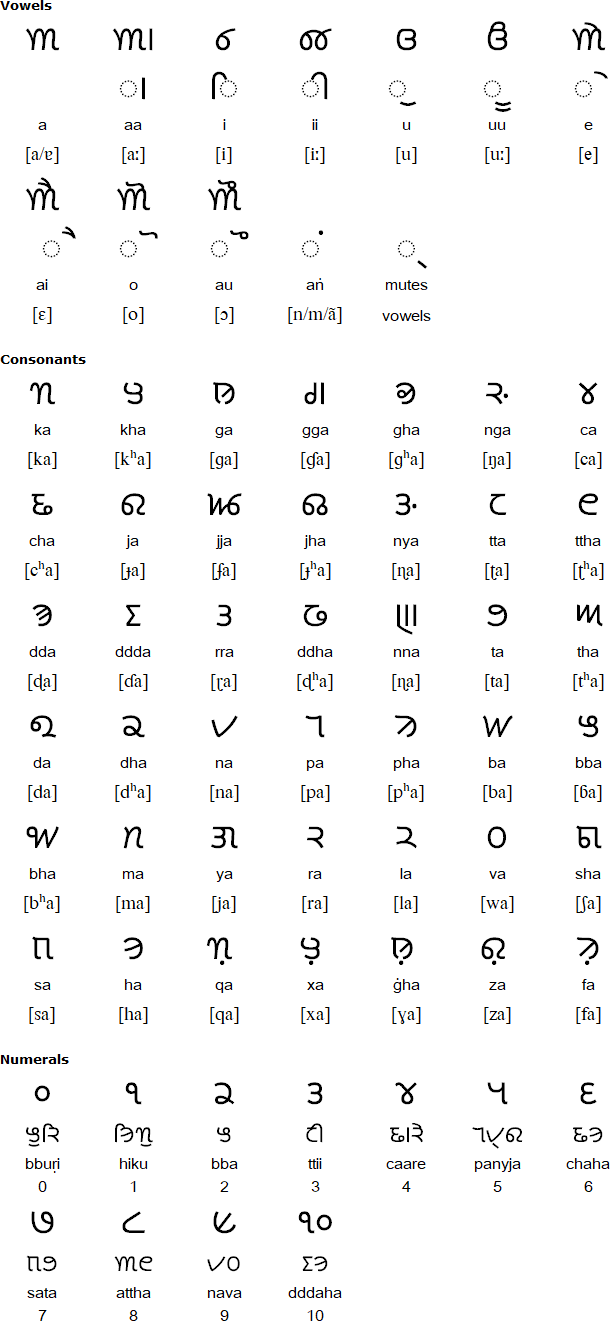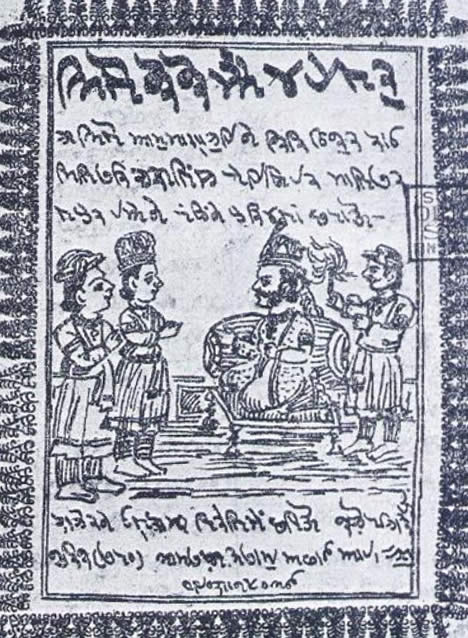The Khudabadi script was was developed by Narayan Jagannath Mehta, the Deputy Educational Inspector in Khudabad, a city in the Dadu District of Sindh province in western Pakistan. It was based mainly on the old Khudabadi script, which was used in Hyderabad. At first it was used just in Khudabad, and was named Khudabadi after the city. People from Khudabad wrote to their Sindhi-speaking relatives in other places in the script, and due to the simplicity of the script, its use soon spread. Sindhi business people then started keeping their accounts and other records in Khudabadi, and schools starting teaching the script.
It was decreed a standard script for Sindhi by the Government of Bombay in 1868. It was officially known the 'Hindi Sindhi' or 'Hindu Sindhi', and also as the Khudawadi, Hathvanki, Warangi or Sindhi script. It was eventually replaced by the Perso-Arabic script in the mid-19th century under British influence.

Details provided by Biswajit Mandal (biswajitmandal[dot]bm90[at]gmail[dot]com)

Source: https://en.wikipedia.org/wiki/Khudabadi_script
Information about the Khudabadi alphabet
https://en.wikipedia.org/wiki/Khudabadi_script
https://www.unicode.org/charts/PDF/U112B0.pdfkhudawadi
https://hindusofsindh.wordpress.com/tag/khudabadi/
Ahom, Aima, Arleng, Badagu, Badlit, Basahan, Balinese, Balti-A, Balti-B, Batak, Baybayin, Bengali, Bhaiksuki, Bhujimol, Bilang-bilang, Bima, Blackfoot, Brahmi, Buhid, Burmese, Carrier, Chakma, Cham, Cree, Dehong Dai, Devanagari, Dham Lipi, Dhankari / Sirmauri, Ditema, Dives Akuru, Dogra, Ethiopic, Evēla Akuru, Fox, Fraser, Gond, Goykanadi, Grantha, Gujarati, Gunjala Gondi, Gupta, Gurmukhi, Halbi Lipi, Hanifi, Hanuno'o, Hočąk, Ibalnan, Incung, Inuktitut, Jaunsari Takri, Javanese, Kaithi, Kadamba, Kamarupi, Kannada, Kawi, Kharosthi, Khema, Khe Prih, Khmer, Khojki, Khudabadi, Kirat Rai, Kōchi, Kodava Lipi, Komering, Kulitan, Kurukh Banna, Lampung, Lanna, Lao, Lepcha, Limbu, Lontara/Makasar, Lota Ende, Magar Akkha, Mahajani, Malayalam, Meitei (Modern), Manpuri (Old), Marchen, Meetei Yelhou Mayek, Meroïtic, Masarm Gondi, Modi, Mon, Mongolian Horizontal Square Script, Multani, Nandinagari, Newa, New Tai Lue, Ojibwe, Odia, Ogan, Pahawh Hmong, Pallava, Phags-pa, Purva Licchavi, Qiang / Rma, Ranjana, Rejang (Kaganga), Sasak, Savara, Satera Jontal, Shan, Sharda, Sheek Bakrii Saphaloo, Siddham, Sinhala, Sorang Sompeng, Sourashtra, Soyombo, Sukhothai, Sundanese, Syloti Nagri, Tagbanwa, Tai Noi, Takri, Tamil, Tanchangya (Ka-Pat), Tani, Thaana, Telugu, Thai, Tibetan, Tigalari, Tikamuli, Tocharian, Tolong Siki, Vatteluttu, Warang Citi
Page last modified: 16.03.23
[top]
You can support this site by Buying Me A Coffee, and if you like what you see on this page, you can use the buttons below to share it with people you know.

If you like this site and find it useful, you can support it by making a donation via PayPal or Patreon, or by contributing in other ways. Omniglot is how I make my living.
Note: all links on this site to Amazon.com, Amazon.co.uk
and Amazon.fr
are affiliate links. This means I earn a commission if you click on any of them and buy something. So by clicking on these links you can help to support this site.
[top]